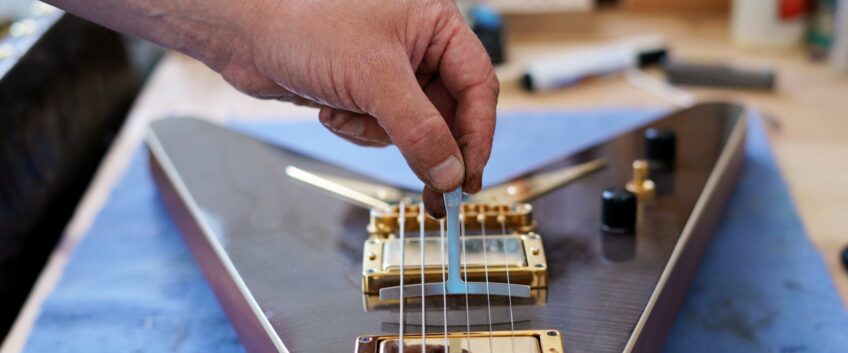
The 4-step guide to electric guitar setup
I met Grégoire Hotier, a very talented French luthier who has a nice workshop in a little town called Mericourt, situated in the north of France.

Grégoire has kindly agreed to share his valuable tips and techniques to help you set up your guitar. Grégoire has been repairing, tuning, and creating musical instruments and effects pedals for over 15 years!
Take a look at one of the wonderful electric guitars he made:
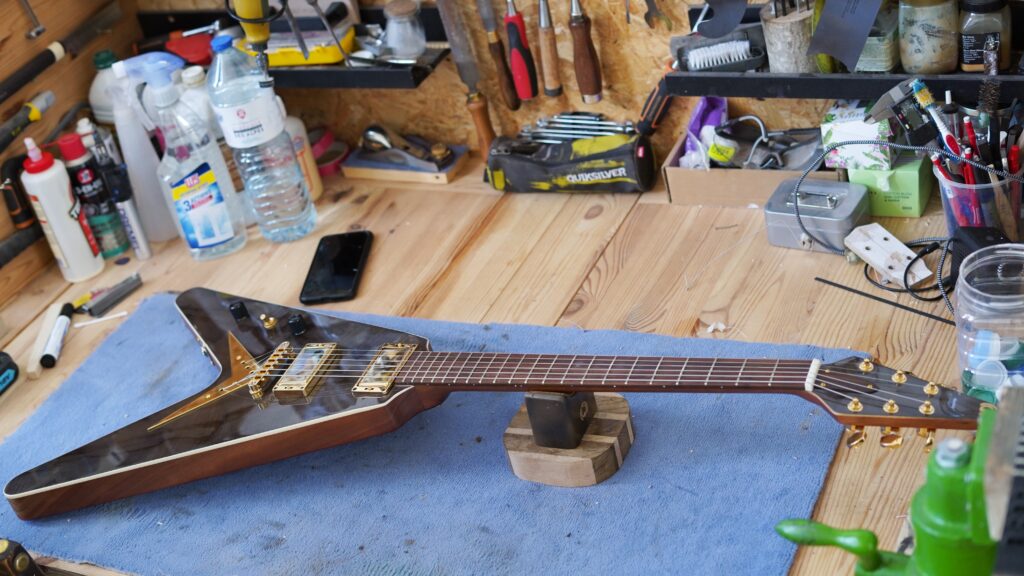
Gregoire also designs high-quality picks made from authentic cow horns! You can find them for sale on his website.
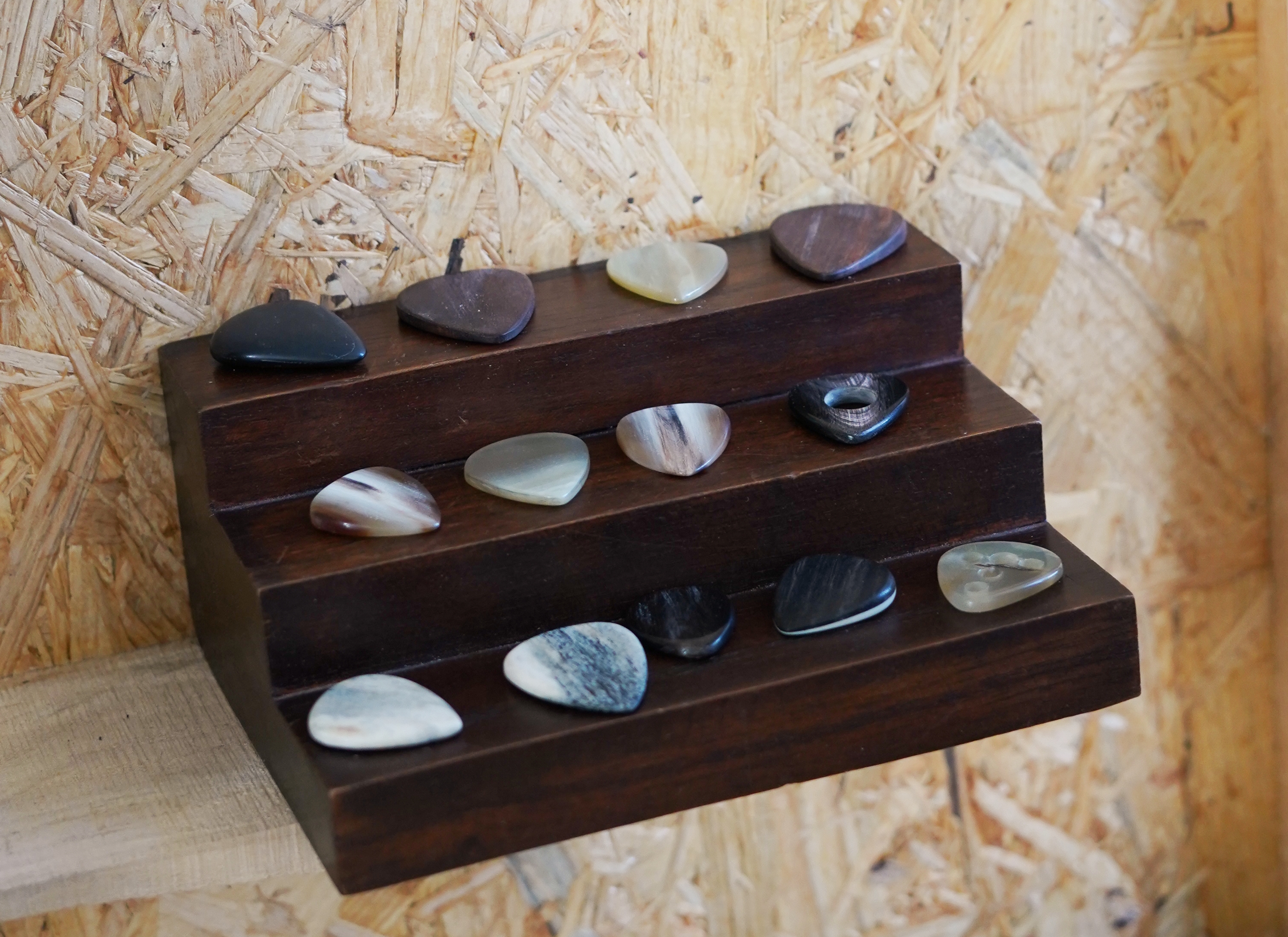
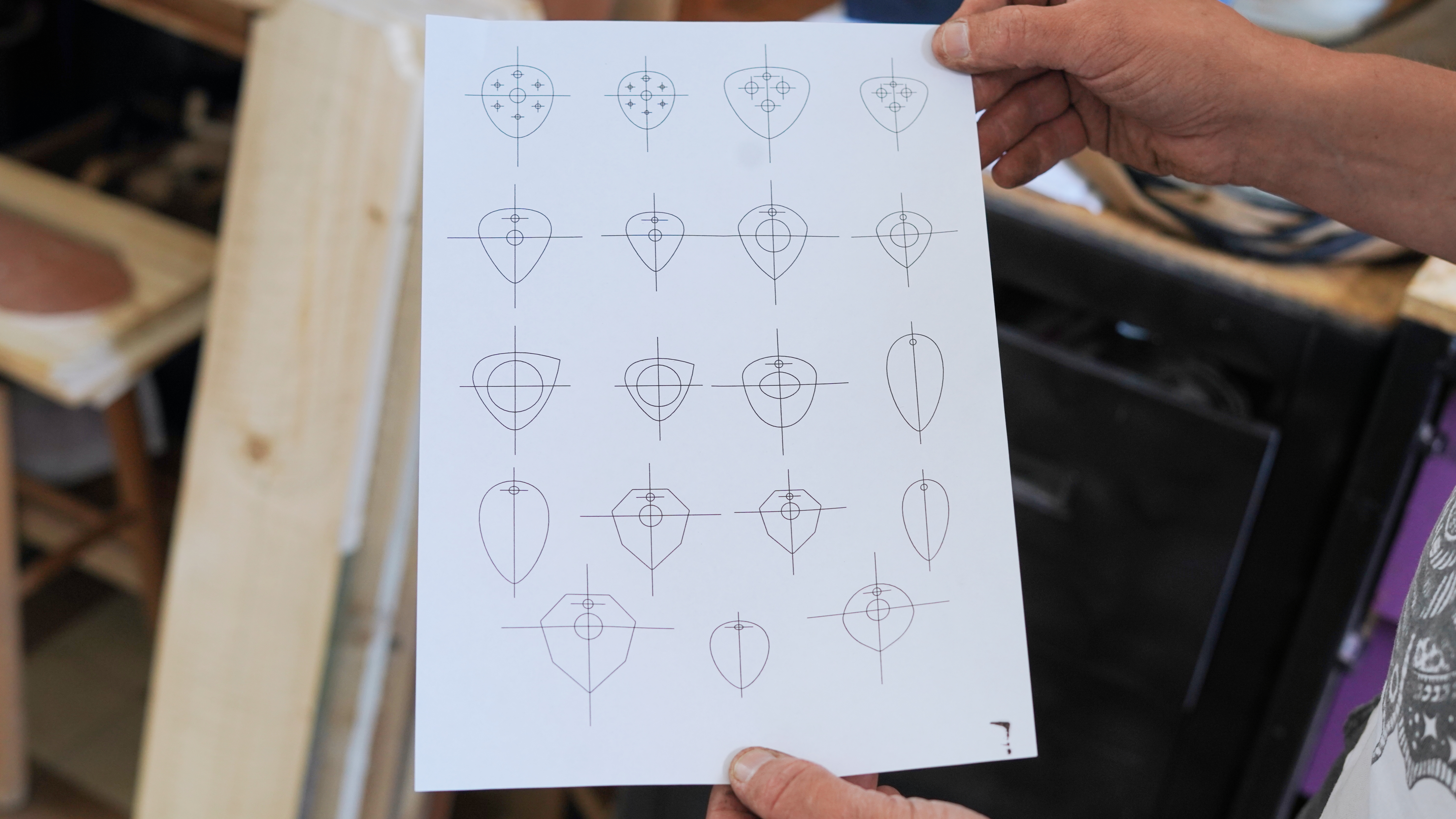
Why is it necessary to perform a setup on your guitar?
Playing on a well-set-up guitar first allows for improved playing comfort. When a guitar leaves the factory after its manufacturing, it’s generally not set up at all, or it often goes out of adjustment during transportation.
Additionally, it is essential to set up your guitar for proper intonation. A good setup on an electric guitar also prevents unwanted noises or crackling that could be caused by strings “buzzing” against the fretboard, creating an unpleasant metallic sound.
A few signs your guitar needs a Set-Up
If the string height is too high between the fretboard and the strings it means that your guitar needs a set-up. It’s more difficult to play when this gap is too significant.
It is also important to properly set up your guitar so that it stays in tune when playing notes all along the fretboard.
Cleaning tip:
For electric guitars, regular cleaning of the electronic parts is necessary. If there’s a bad contact in your guitar’s input jack, or if you hear crackling noises, grab a small piece of sandpaper and roll it into a small cylinder. Then, insert it into the input jack of your guitar to remove any possible impurities that may have accumulated inside.
Here are the 4 steps recommended by Grégoire for properly setting up your guitar.
How to set up your guitar?
Step 1: checking the nut height
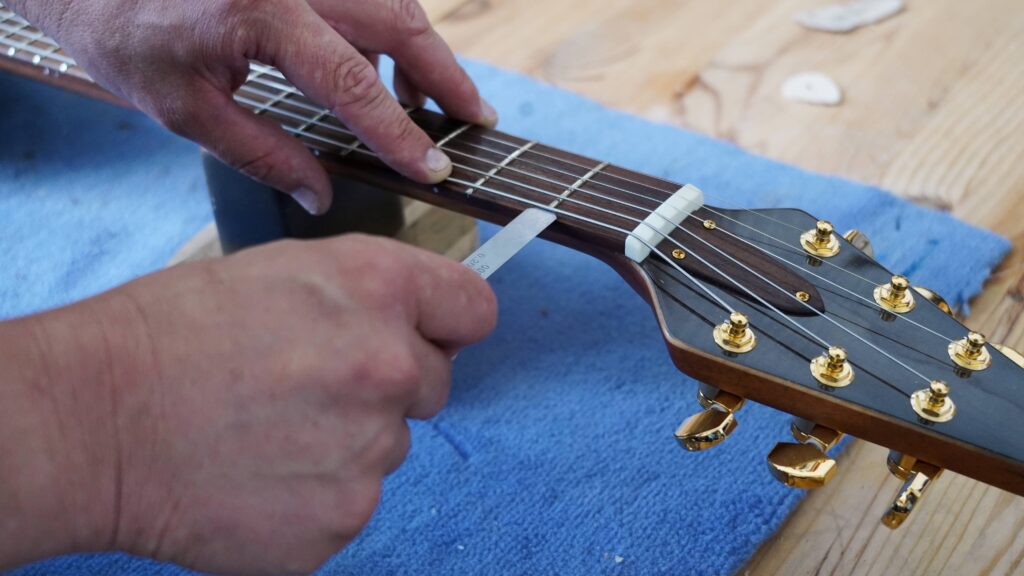
What is the nut of a guitar?
The nut of a guitar is the small piece placed between the neck and the headstock of the guitar, and it has 6 slots. It holds the strings and ensures their spacing and tuning stability.
To check and then adjust the depth of the nut slots, start by pressing down on the third fret and observe the height between the string and the first fret. The feeler gauge should pass through without touching either the fret or the string; there should be no snagging. If the string touches the first fret or if there is a significant gap, it means the setup is not correct.
There are several feeler gauges of different sizes; for an electric guitar, the gap should be between 0.15 and 0.20 mm.
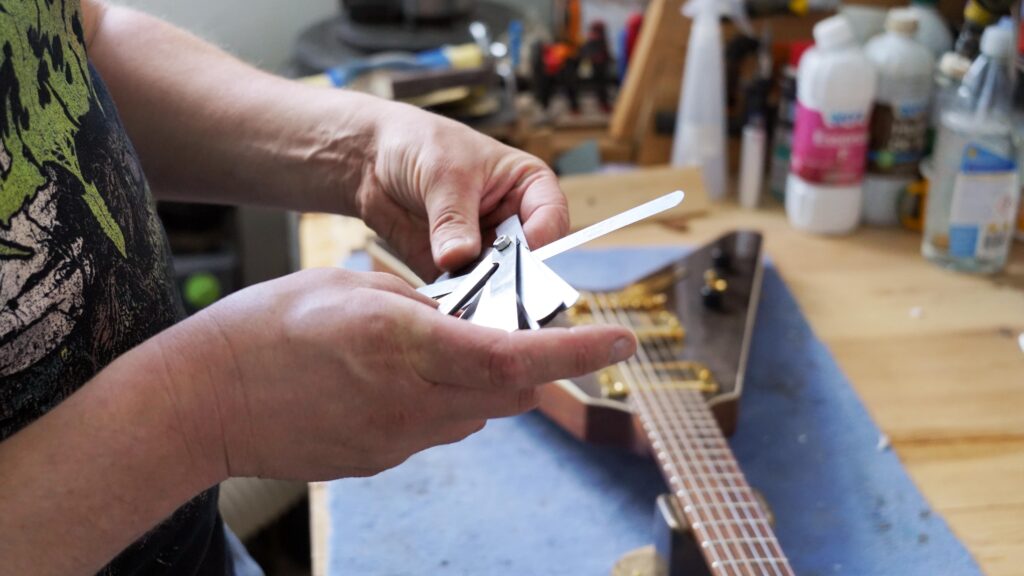
Step 2: adjusting the neck relief
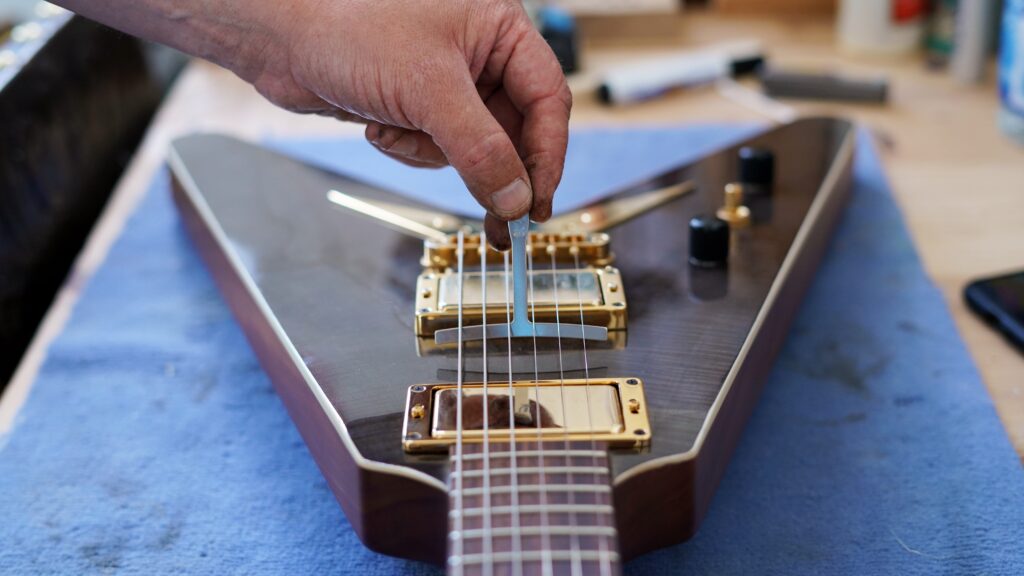
This step involves adjusting the neck curvature according to the string gauge. A neck should never be completely flat, there should always be a slight bow. To determine if this bow is sufficient or not:
Press down at two points, on the first fret and at the junction of the body and the neck.
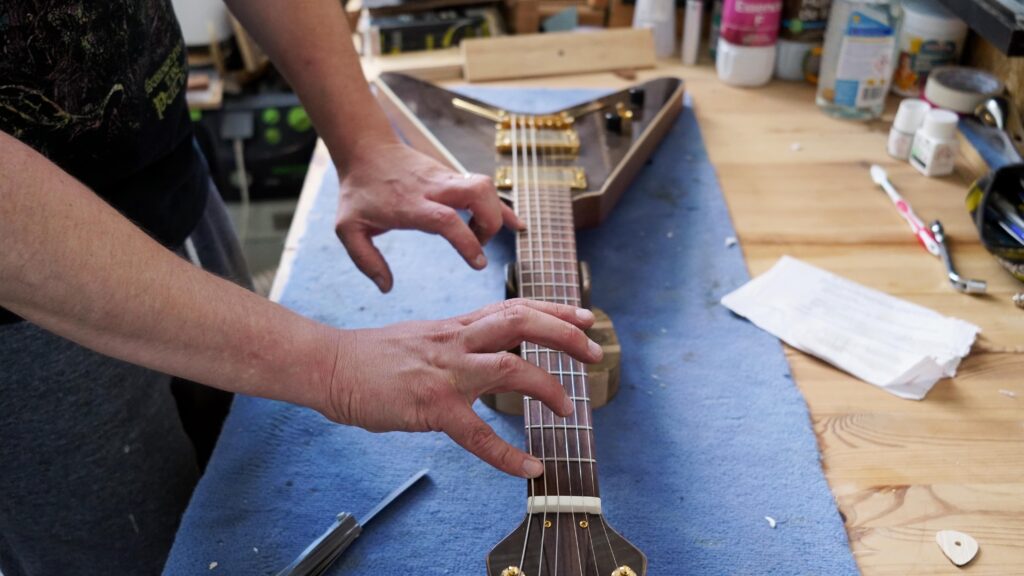
On an electric guitar, press down on the first and fifteenth frets, then check that there is neither too much nor too little distance above the seventh fret.
The recommended space between the fret and the string should be between 0.10 to 0.25 mm.
To perform this check, you can use a capo. Place the capo on the first fret and then press the string at the junction between the body and the neck, around the fifteenth fret.
If the gap is too large, and if the feeler gauge goes through too easily, you will need to tighten the neck to increase the slight bow in the middle, which will bring the strings closer together.
If the feeler gauge does not go through at all, you will need to loosen the neck using the truss rod located on the headstock of the guitar.
Picture: WikiHow. The Truss rod.
Step 3: adjusting the bridge height
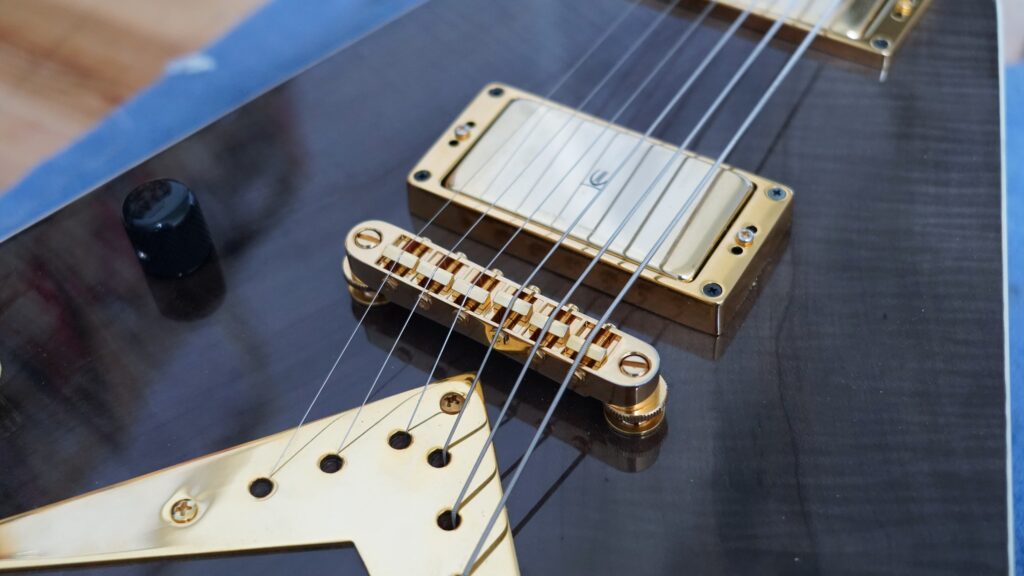
On an electric guitar, you should aim for a gap of 1.8 mm at the twelfth fret between the top of the fret and the bottom of the string on the bass side and 1.4 mm on the treble side.
For this type of bridge, you can adjust it by tightening or loosening the screws on each side of the bridge.
Tighten or loosen the bridge screws to achieve these two values.

Step 4: adjusting the saddles

We will now adjust the depth of the saddles.
What is a saddle on a guitar?
On electric guitars, the six saddles are located on the bridge; they allow you to adjust the height of each string.
First, we will tune the guitar. But we will check the tuning by playing the harmonics, starting on the twelfth fret of the low E-string. Use the most precise tuner possible. Then, we will press down on the twelfth fret and play the note. If it is properly set, the note will be in tune.
If the tuner indicates that the note is too low, it means the saddle is too deep, and you will need to move it toward the neck.
Adjusting a guitar is no easy task. We advise you to make regular appointments with a luthier for the best advice. Don’t forget that tuning differs from one type of guitar to another.
Don’t hesitate to ask your questions in the comments.
Leave a comment
Your email address will not be published.
| Title | Artist | |
|---|---|---|
| 'Til You Can't | Cody Johnson | |
Master of Puppets

|
Metallica | |
| Rollin' and Tumblin' | Muddy Waters | |
| All Day and All of the Night | The Kinks | |
My Girl

|
The Temptations |




5 Comments
Great guide, but be careful with truss rod adjustment. Make slight adjustments and be patient or the neck might warp.
Vi ringrazio per la guida di questi 4 passaggi sono stati molto utili
A very useful article. I have a Joe Duplantier signature Charvel which is a dream to play, but is slightly out of tune on the twelfth fret. I’ll use your instructions to fix that ans also check the rest of the areas you mention. Thank you!
Thank you for this informative article on guitar setup. My practice on the subject includes the following steps as well. The first four steps are related to string action.
Step 5: adjusting intonation
Step 6: adjusting the pickup heights
Thanks for this great step-by-step guide to improving playability and sound! Highly appreciated, and looking forward to more detailed ones!